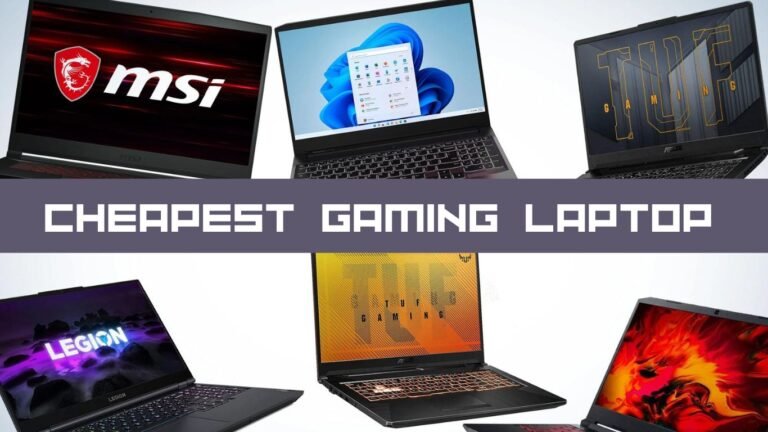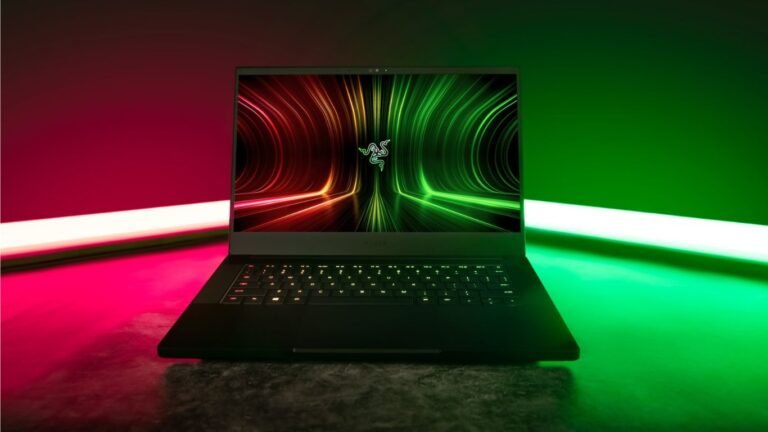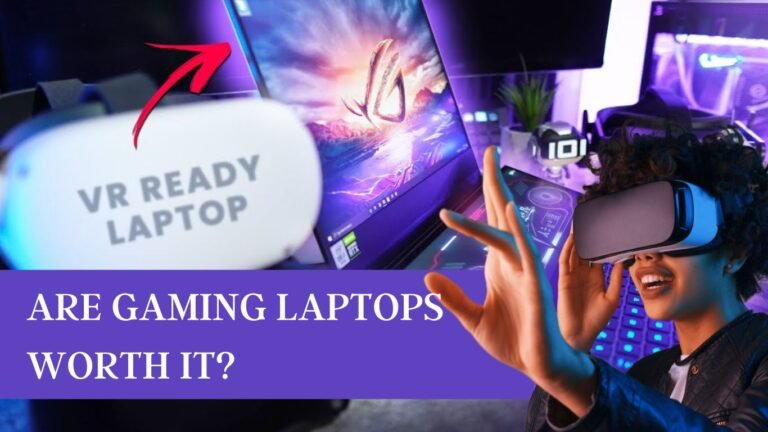CAN GAMING LAPTOPS RUN VR?
Virtual Reality (VR) is an immersive technology that has become increasingly popular in recent years. It allows users to experience a whole new level of gaming, with 3D environments and lifelike experiences. However, one question that comes up often is whether gaming laptops are capable of running VR. In this article, we will explore the capabilities of gaming laptops and see if they are able to handle VR gaming.
Introduction
Gaming laptops are a popular choice for gamers who want to take their gaming experience to the next level. They are powerful and offer great performance, making them ideal for gaming. However, when it comes to VR, the question arises as to whether gaming laptops are capable of handling the demands of VR gaming. In this article, we will explore this question and provide you with the answers you need.
What is Virtual Reality (VR)?
Virtual Reality (VR) is a technology that allows users to experience a computer-generated environment as if they were actually there. The user wears a headset that tracks their movements and displays a 3D image of the environment. This creates an immersive experience that allows the user to interact with the virtual world.
The System Requirements for VR
To run VR on a PC, there are certain system requirements that need to be met. These requirements are determined by the headset manufacturer and can vary depending on the headset. However, there are some basic requirements that are common to most VR headsets.
The minimum system requirements for VR are:
- Windows 10 operating system
- Intel Core i5 processor or equivalent
- 8GB of RAM or more
- A graphics card that supports DirectX 11 or higher
- A USB 3.0 port
- HDMI 1.3 port or DisplayPort 1.2
- At least 1 USB 2.0 port
Can Gaming Laptops Handle VR?
The short answer is yes, gaming laptops can handle VR. However, not all gaming laptops are created equal, and some are better suited for VR than others. There are several factors to consider when determining whether a gaming laptop is capable of running VR.
Factors to Consider
Graphics Card
The graphics card is one of the most important components when it comes to running VR. It is responsible for rendering the 3D images that are displayed in the headset. To run VR, you need a graphics card that is capable of handling the demands of VR.
When it comes to graphics cards, there are two main players in the market, Nvidia and AMD. Both companies offer graphics cards that are capable of handling VR. However, not all graphics cards are created equal, and some are better suited for VR than others.
Nvidia’s GTX and RTX series graphics cards are widely considered to be the best for VR. These cards offer high performance and are able to handle the demands of VR without any issues.
AMD’s Radeon series graphics cards are also capable of running VR. However, they are not as widely used for VR as Nvidia’s cards.
Processor
The processor is another important component when it comes to running VR. It is responsible for handling the calculations that are required to render the 3D images in real-time.
When it comes to processors, Intel’s Core i5 and i7 processors are widely considered to be the best for VR. These processors offer high performance and are able to handle the demands of VR without any issues.
AMD’s Ryzen processors are also capable of running VR, but they may not be as powerful as Intel’s processors.
RAM
RAM is an important component when it comes to running VR. It is responsible for storing the data that is required to render the 3D images in real-time.
To run VR, you need at least 8GB of RAM. However, for the best performance, it is recommended to have 16GB or more.
Storage
Storage is another important component when it comes to running VR. VR games and applications can take up a lot of space, so it’s important to have enough storage.
A solid-state drive (SSD) is recommended for running VR. This is because SSDs are faster than traditional hard drives and can provide better performance.
Display
The display is an important component when it comes to VR. The headset displays the 3D images, so it’s important to have a high-quality display.
Most VR headsets have a resolution of 1080×1200 per eye. However, some newer headsets, such as the Valve Index, have higher resolutions.
Battery Life
Battery life is important if you plan to use your gaming laptop for VR on the go. VR can be very demanding on the battery, so it’s important to have a laptop with a good battery life.
Cooling
Cooling is important when it comes to running VR on a gaming laptop. VR can be very demanding on the hardware, which can cause the laptop to heat up.
It’s important to have a laptop with good cooling to prevent overheating. This can be achieved through the use of cooling pads or by choosing a laptop with a good cooling system.
Conclusion
In conclusion, gaming laptops are capable of running VR. However, not all gaming laptops are created equal, and some are better suited for VR than others. When choosing a gaming laptop for VR, it’s important to consider the graphics card, processor, RAM, storage, display, battery life, and cooling.
By choosing a gaming laptop that meets the recommended system requirements for VR, you can enjoy a smooth and immersive VR experience.
FAQs
Can I run VR on a budget gaming laptop?
It is possible to run VR on a budget gaming laptop, but you may experience performance issues.
Do I need a gaming laptop to run VR?
No, you don’t need a gaming laptop to run VR, but it is recommended to have a laptop with high-performance components.
Is cooling important when running VR on a gaming laptop?
Yes, cooling is important when running VR on a gaming laptop to prevent overheating.
Can I upgrade my gaming laptop to run VR?
It depends on the laptop. Some laptops may be upgradeable, while others may not.
Are all VR headsets compatible with gaming laptops?
Most VR headsets are compatible with gaming laptops, but it’s important to check the system requirements before purchasing a headset.







